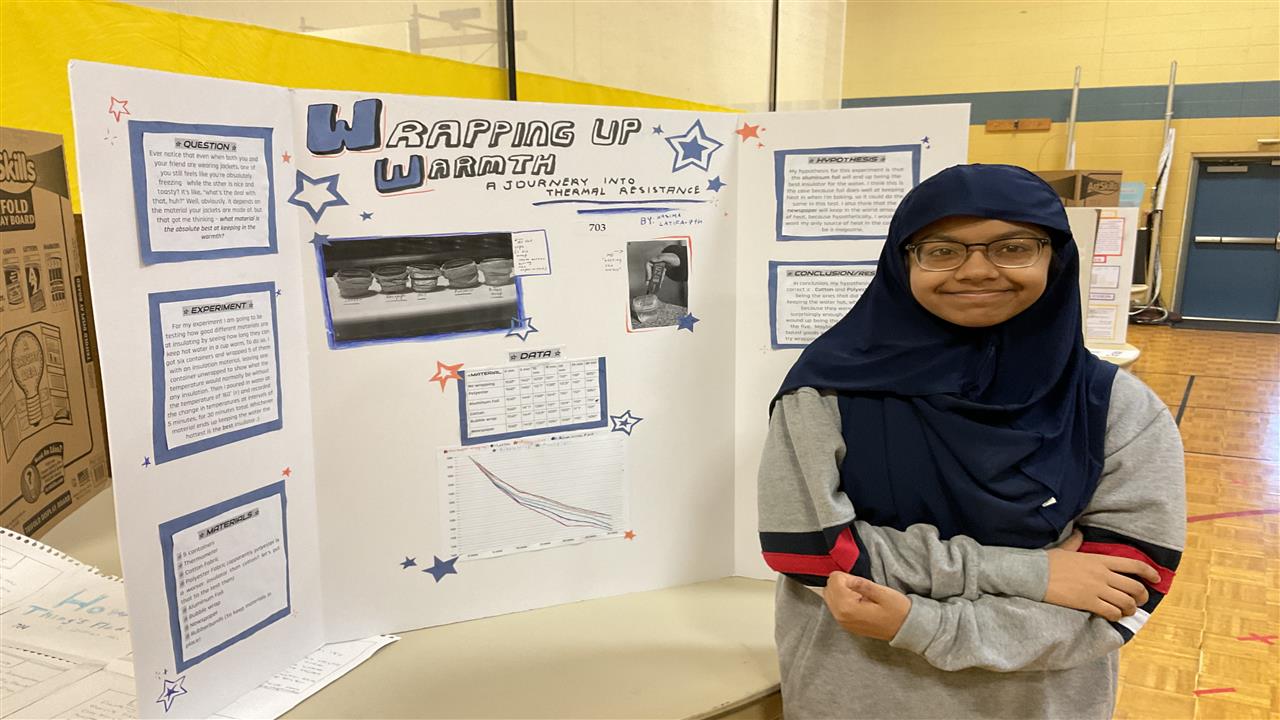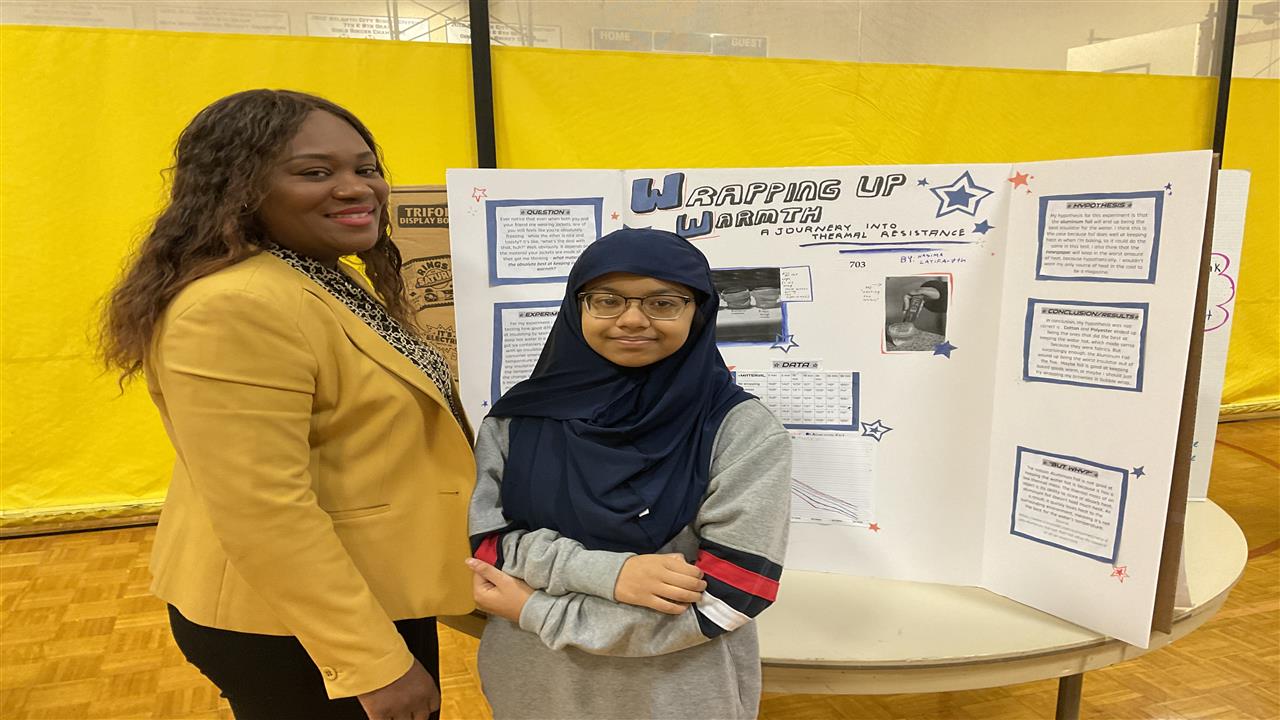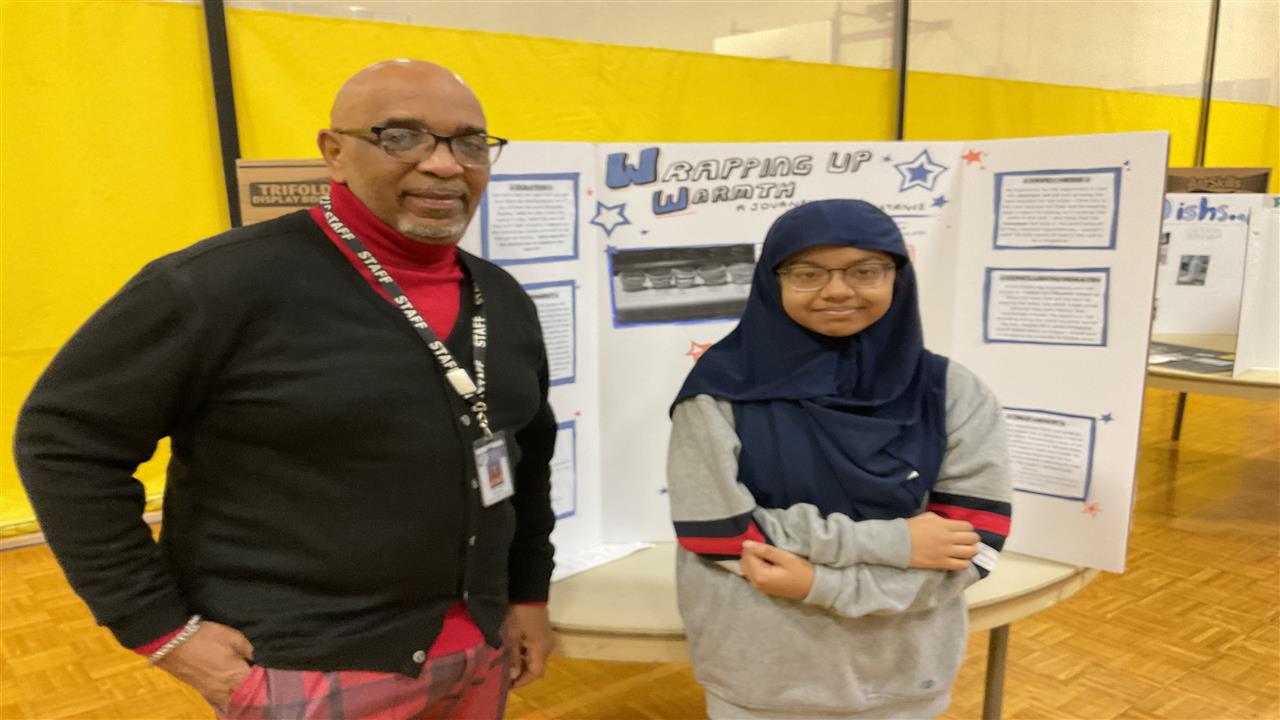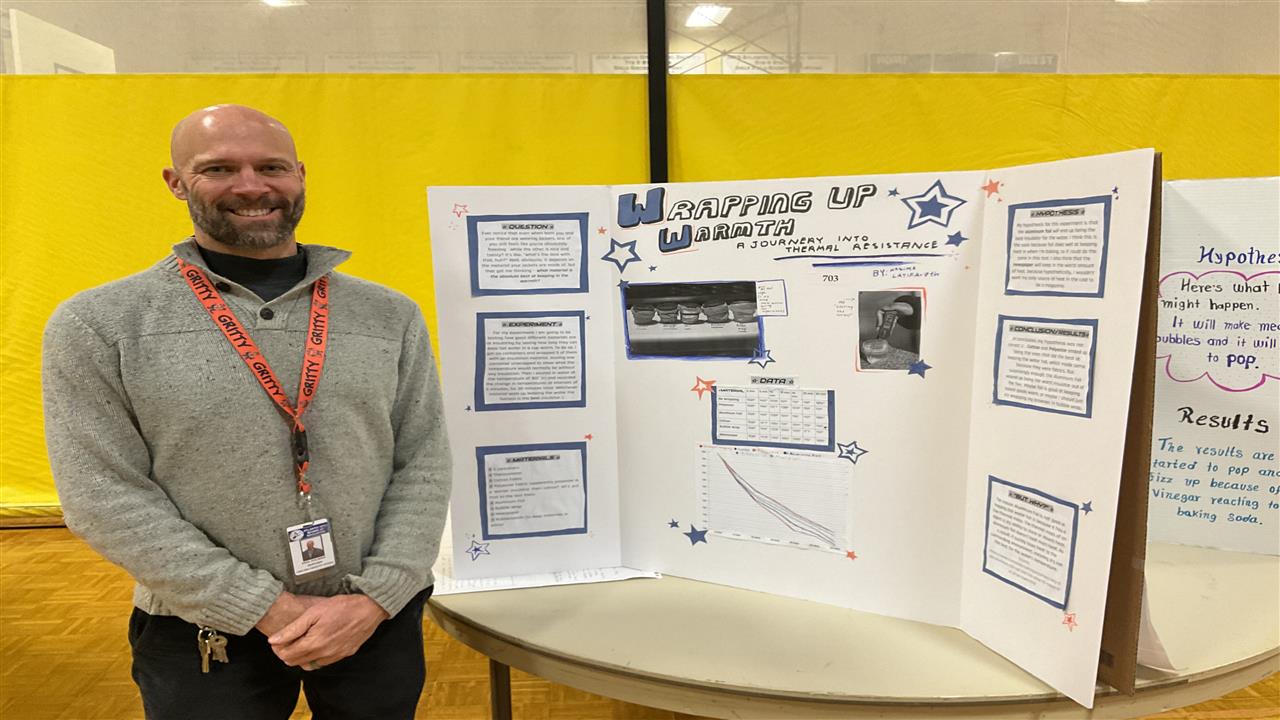Chelsea Heights School STEM Students Show Command of Scientific Method
ATLANTIC CITY — What material is best for keeping in warmth?
That’s the question seventh grade student Wasima Latifa set out to answer during the Chelsea Heights School Science Technology, Engineering and Mathematics (STEM) Fair held on Thursday, January 18, 2024.
Latifa based her research on the observation that even when two friends are both wearing jackets, one can be absolutely freezing while the other is warm and toasty.
“What’s the deal with that, huh?” she quipped. “Well, obviously, it depends on the material your jackets are made of.”
 (Wasima Latifa, who is in the seventh grade, examined which materials are best for holding in heat.)
(Wasima Latifa, who is in the seventh grade, examined which materials are best for holding in heat.)
That’s how she arrived at her initial question for her project Wrapping Up Warmth.
Students from kindergarten through eighth grade participated in the STEM fair, filling half of the school’s multipurpose room with about 100 Science projects.
 (Dr. La’Quetta S. Small and Wasima Latifa stand by Latifa's project Wrapping Up Warmth.)
(Dr. La’Quetta S. Small and Wasima Latifa stand by Latifa's project Wrapping Up Warmth.)
Superintendent of Schools Dr. La’Quetta S. Small said she was excited about attending the science fair.
“It’s great to observe how students apply their knowledge of scientific concepts during exploration and student inquiry,” said Small. “These are the type of school experiences that spark students’ interest in careers in science, technology, and engineering.”
 (Chelsea Heights Principal James E. Knox and Wasima Latifah stand by Latifah’s project Wrapping Up Warmth.)
(Chelsea Heights Principal James E. Knox and Wasima Latifah stand by Latifah’s project Wrapping Up Warmth.)
Chelsea Heights Principal James E. Knox Jr., and Paul Polinski, the science teacher for grades 6-8, said the STEM fair gives students an opportunity to explore areas of study that they might not otherwise encounter during the course of the year.
“We didn’t put the kids in a box when it came to this,” said Knox. “The only thing that was structured was the presentation.”
Both Knox and Polinski said they were pleased with the results.
“Every year it gets a little better,” Polinski said. “The younger kids see the older kids’ projects, and they get inspired.”
Students learn how to explore an idea through the scientific method, asking a question, forming a hypothesis, assembling materials, establishing procedures, identifying variables, arriving at results and explaining their conclusion.
 (Science Teacher Paul Polinski helped teach students how to solve problems using scientific methods.)
(Science Teacher Paul Polinski helped teach students how to solve problems using scientific methods.)
“It’s naturally how you solve problems all the time. We just don’t think about it,” Polinski said. “You have a question. You have a hypothesis and then you want to test it out.”
Knox said students at every grade level completed projects.
“The outcome is just incredible,” Knox said. “For elementary students to be able to carry out tasks by using the scientific method and take those things from the curriculum and have them turned into a talent is amazing. Now the kids are able to take their own talents and apply science to every-day tasks.”
As for Latifa’s project, what material is best for keeping in warmth?
Latfia discovered that cotton was the best of all the materials she evaluated, with polyester coming in a close second.
And how did she arrive at her conclusion?
Latifa tested cotton and polyester fabrics, aluminum foil, bubble wrap, newspaper and rubber bands by heating similar containers of water to the same temperature.
Then she wrapped each container with a different material and left the final container completely unwrapped. Latifa then used a thermometer to chart the drop in temperature every five minutes for half an hour. Thirty minutes after she started her experiment, she had her answer — cotton was the material best for keeping in warmth.
But did it support her hypotheses?
It didn’t.
She initially thought aluminum foil would serve as the best insulator because foil keeps food warm during baking. “Surprisingly enough, the aluminum foil wound up being the worst insulator out of the five,” Latifa said in her conclusion. “Maybe foil is good at keeping baked goods warm, or maybe I should just try wrapping my brownies in bubble wrap.”
Polinski said that in March, students who did well at the Chelsea Heights STEM fair may qualify for the Jersey Shore Science Fair and those who advance go to the Delaware Valley Science Fair. Regardless of who advances, any student’s success is a victory for the entire school community, Knox said.
“We teach our children to clap for others when others are doing things well,” Knox said.

